Hezbollah drone reveals how Israeli military uses settlers as human shields in Haifa
By Ivan Kesic
A series of photos taken by a Hezbollah drone flying over occupied Haifa and Mount Carmel has once again exposed vulnerabilities in much-touted Israeli air defense systems and highlighted the regime's practice of using settlers as human shields.
The footage and accompanying images show how the regime deliberately positions its military installations near residential, religious and protected natural sites in the occupied territories.
On October 9, the Lebanese resistance movement Hezbollah released a seven-minute video featuring high-resolution photographs taken by its Hudhud drone as it flew over Haifa and Mount Carmel in northern occupied Palestine.
The surveillance drone captured hundreds of images of potential targets for the resistance, primarily focusing on strategic military and industrial sites, before returning undetected to Lebanon.
This marked at least the fourth such operation by Hezbollah since late spring, each accompanied by the public release of sensitive photographs of key Israeli locations.
The drone's flight path
The video began with images of the Kiryat Nahum industrial zone in eastern Haifa, located near a refinery and oil storage tanks, where potential air defense batteries are situated.
The drone then flew over the Haifa refinery, which the Press TV website previously described as one of Israel's key industrial facilities. Two-thirds of the regime’s 15 million tons of oil are refined there.
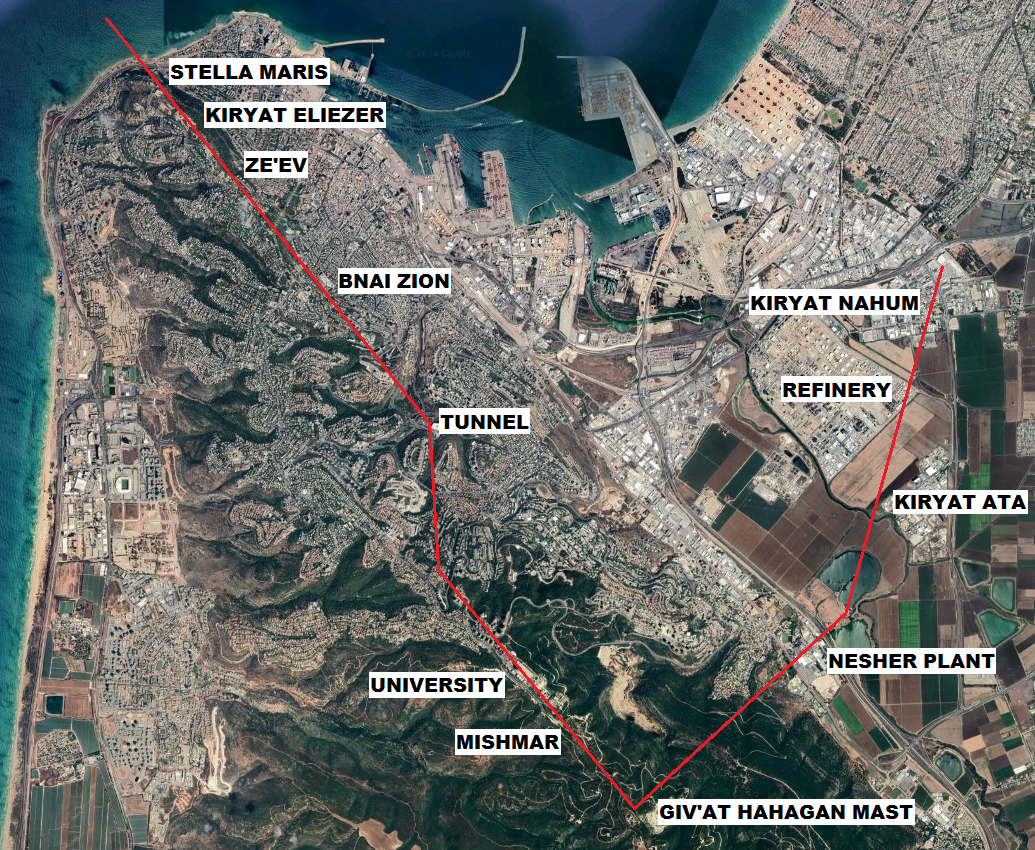
Continuing south, the drone passed over the Kiryat Ata industrial zone, which hosts factories, storage facilities, and research laboratories for several chemical and fertilizer manufacturers such as ICL Group, Novetide, Wiseman & Friedman, and Sterokem.
Turning southwest, the drone also captured images of the Nesher cement plant, the Zionist entity’s largest cement producer, supplying 60 percent of the domestic market.
The southernmost point shown was a ministry of communications antenna atop Giv'at HaHagan, the second-highest peak on Mount Carmel.
According to Hezbollah, this antenna serves as a major communications hub between the ‘northern command’ and the ‘ministry of war affairs’ in Tel Aviv.
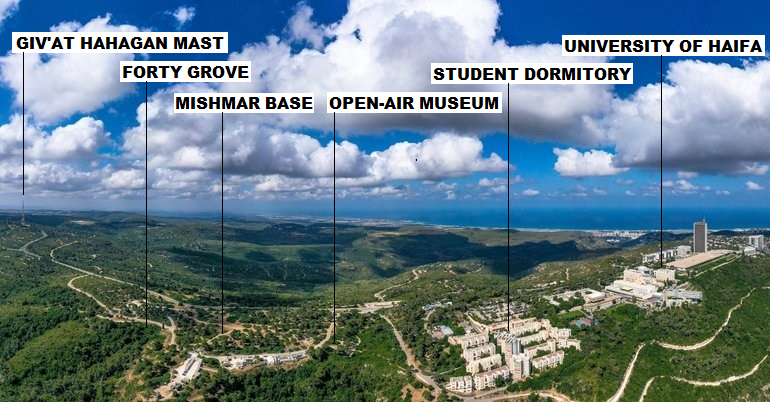
Moving further, the drone recorded the Mishmar military site, located along Road 672 in Mount Carmel National Park, near the Giv'at HaHagan mast. This site is controversial for several reasons.
The base, recently built among the forests of a strictly protected natural zone, is situated next to student dormitories, an archaeological site, and a religious place.
Constructed on the remnants of the Mishmar Carmel settlement from the 1940s, the base is tasked with protecting Haifa and its surroundings. It houses visible radars and newly built platforms with Iron Dome interceptor missiles.
According to satellite imagery from 2024, all four platforms for air defense launchers were constructed in recent months.
The "Inature" website, which provides information about the Zionist entity's protected areas and visitor instructions, including for the hiking trail that passes through the site, mentioned occasional military activity as far back as 2012 and a blockade of the trail due to permanent military activity since 2015.
The choice of this location is controversial because Mount Carmel is a national park with dense, dry, and highly flammable forests, which have been severely impacted by catastrophic fires in recent years, including this summer.
In today's wartime environment, these forests are vulnerable to Hezbollah rocket strikes, hot launches, failed Iron Dome interceptors, and debris from successful interceptions.
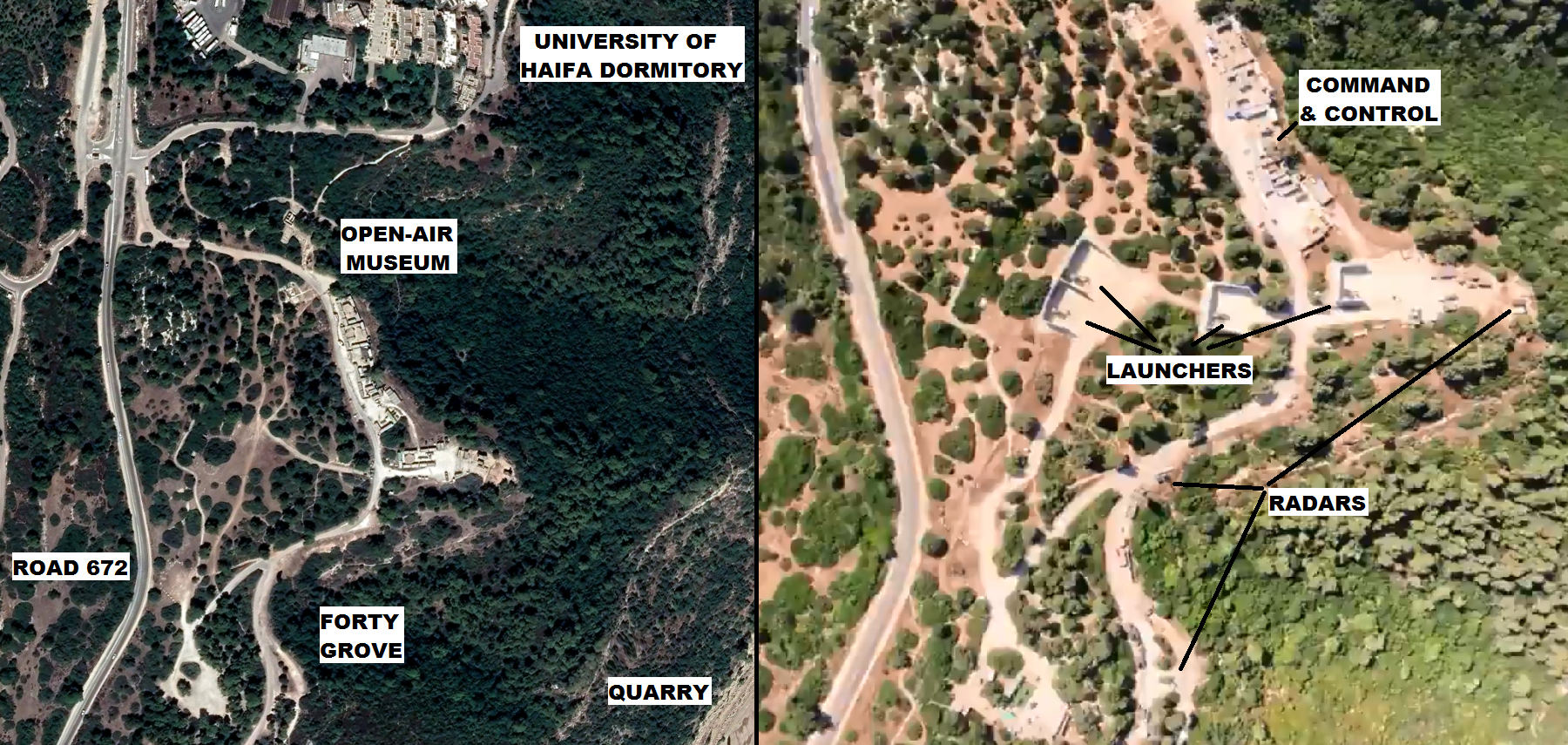
The platforms are located just 300 meters southeast of the University of Haifa's student dormitories, which house about a thousand Israeli and international students.
This highlights Israel's tactic of using its own settler population and non-military facilities as human shields, as mentioned in Hezbollah's reports following the drone's flight.
In addition to endangering nature and youth, the regime has also disregarded historical heritage. The Mishmar base is situated in the middle of an archaeological site.
Just 100 meters west of the base lies the Road of the Millennia (Derech HaDorot), an open-air museum affiliated with the University of Haifa's Reuben and Edith Hecht Museum.
This museum contains Bronze Age Canaanite, Iron Age Jewish, and Roman-Byzantine structures, relocated here from other sites in danger of destruction.
Only 150 meters east of the platforms and mere meters from the radars is the Grove of the Forty (Hurshat HaArba'im or Shajarat al-Arbein), a sacred oak grove with an ancient stone well, a significant site for the Druze community.
After overflying the Mishmar base, the drone continued northwest, photographing the University of Haifa campus, including the Yitzhak Rabin Complex, the Main Building, and the Eshkol Tower, which Hezbollah claims houses military facilities.
Hezbollah’s drones return with more detailed footage of vital Israeli facilitieshttps://t.co/shda91NVU6
— Press TV 🔻 (@PressTV) October 10, 2024
The drone then crossed over Haifa's Denia, Ramat Alon, and Ramot Remez neighborhoods, reaching the Grand Canyon Mall, near the central junction of the Carmel Tunnel.
This two-part twin tunnel, which runs 6.5 kilometers under Mount Carmel, connects the city's west and east coasts. In wartime, it functions as both a shelter and a hospital for settlers.
Flying over Vardiya and Geul neighborhoods, the drone captured footage of the large Bnai Zion Medical Center, known for its close cooperation with the Israeli army and for treating wounded regime soldiers during various wars against Lebanon.
The flight continued along Tchernichovsky Street, where Ze'ev Air Base, a reserve military defense base equipped with David's Sling batteries, and Kiryat Eliezer Air Base, the main air defense base responsible for protecting Haifa, are located.
The footage concluded with images of the Stella Maris base on the Mediterranean coast, used for maritime monitoring and surveillance along the northern coast.
The base is equipped with a multi-layered radar system. It was constructed only 50 meters from the historic Stella Maris Monastery, while the Ze'ev Air Base was built at a similar distance from the historic Monastery of the Discalced Carmelite Nuns.
This further illustrates the regime's practice of placing military installations near civilian, historical, and religious sites to dissuade the Lebanese resistance from targeting the bases.
US university fires Iranian professor over support for Iran, Palestine
VIDEO | Anti-Trump activists deliver ‘people’s indictment’ at White House
EU’s tampering with Russian assets is ‘theft’ no matter how it’s framed: Moscow
Israeli army kills Palestinian teen during northern West Bank raid
VIDEO | Two killed, nine wounded in mass shooting at Brown University
VIDEO | Germany considers Tunisia for migrant 'return center' plans
VIDEO | UK protesters show solidarity with Palestinians at Christmas
VIDEO | UK digital ID cards spark debate over immigration control, security










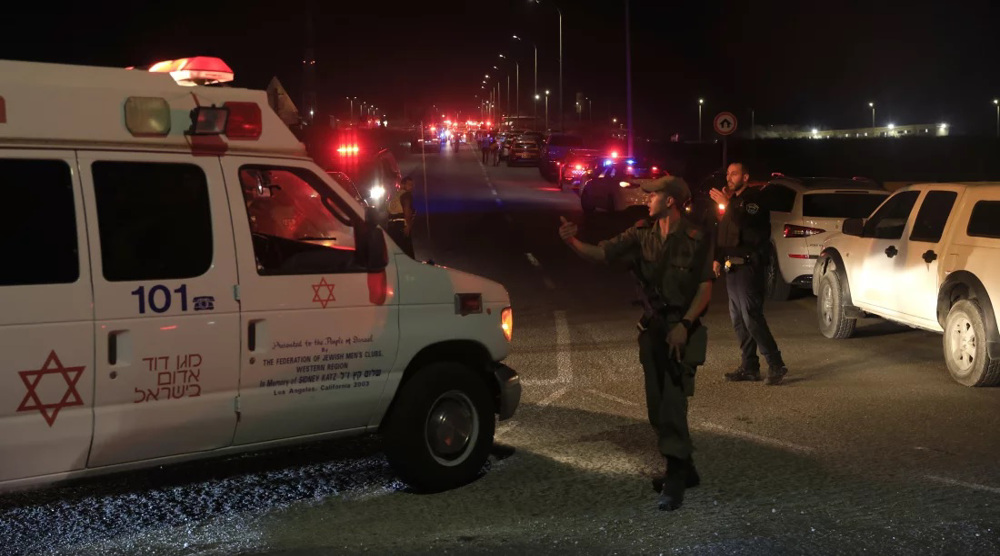
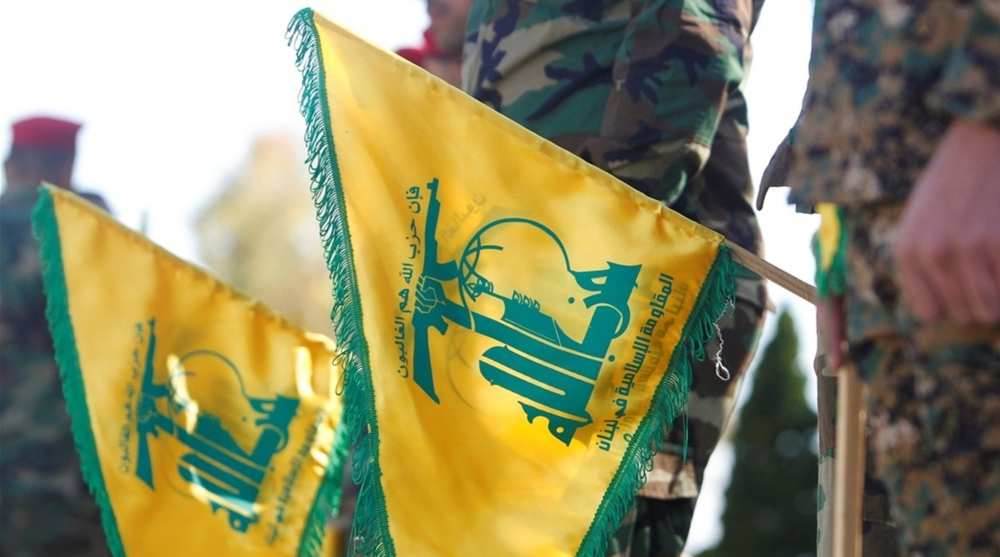
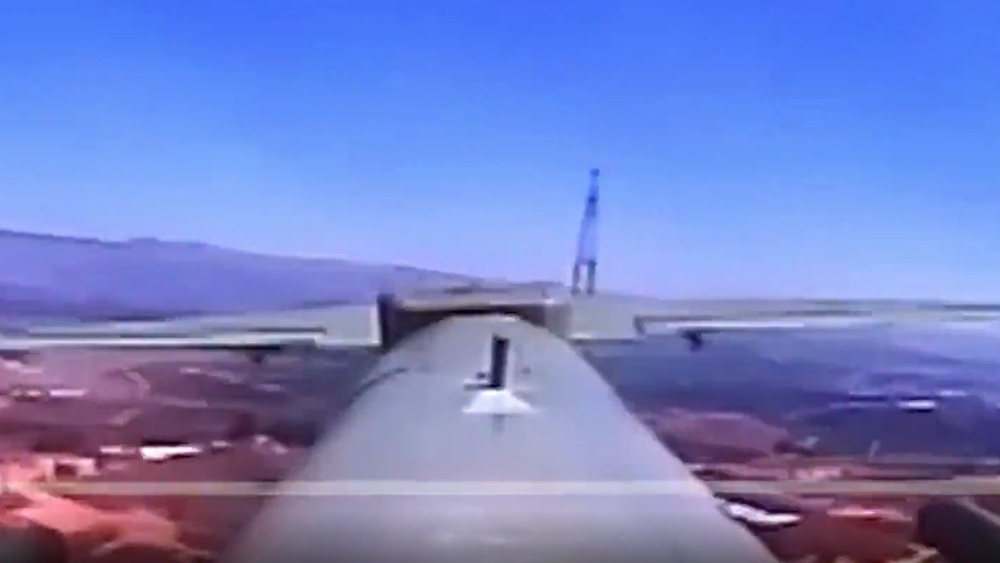
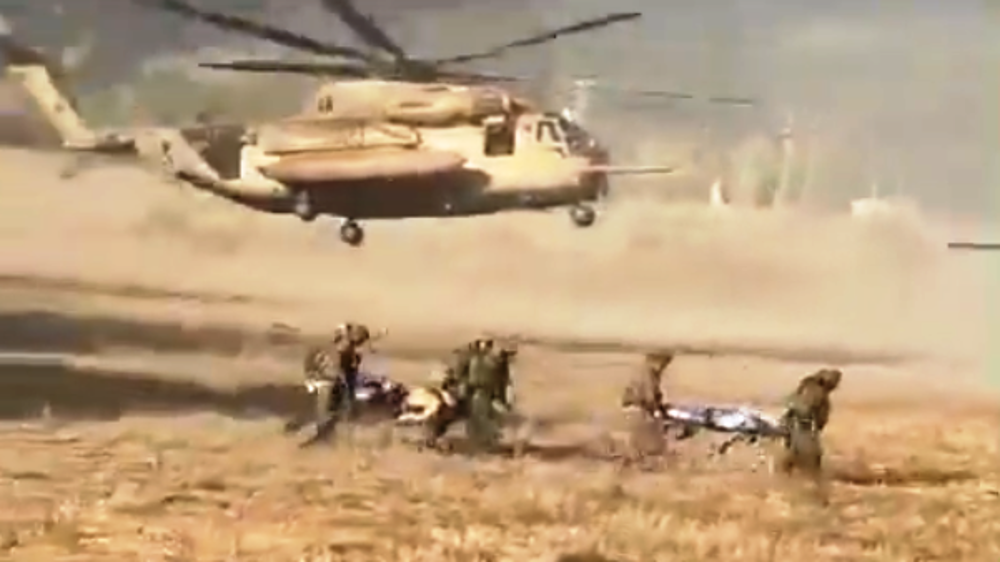

 This makes it easy to access the Press TV website
This makes it easy to access the Press TV website